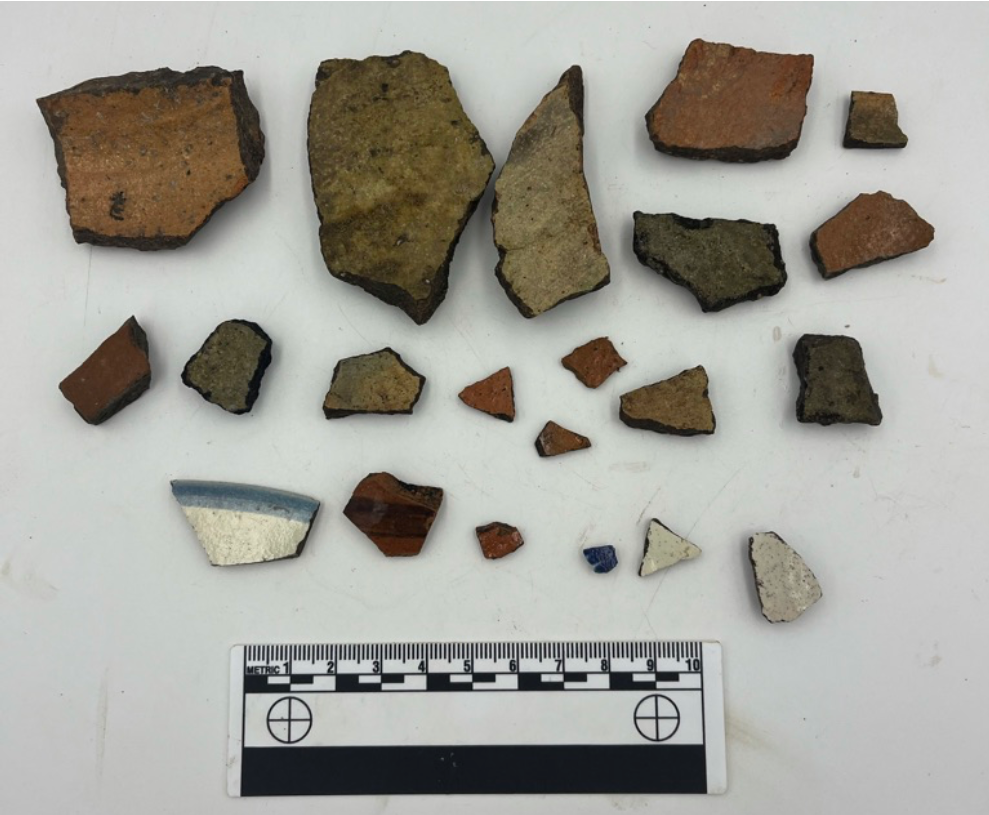Once a property has been acquired by the Conservancy, determining the boundaries of the site so it can be fenced and properly secured is one of the main priorities. One of the Conservancy’s newest preserves, a site in Camp Wood, Texas, is a 6-acre tract on the east bank of the Nueces River, adjacent to Mission San Lorenzo, an 18th-century Spanish mission site. Mission San Lorenzo de la Santa Cruz was established by Fransiscan friars in 1762 to pacify attacks by the raiding Lipan Apache. The mission only lasted nine years. It is believed the site is ultimately Archaic in age, determined by several middens. A metes and boundaries survey was performed to separate the land with the archaeology from the portion of land that contains a house. The property will be subdivided and the house sold to a private homeowner.
The home itself is situated on a half-acre parcel, and archaeological testing would be needed to gain a full understanding of the site’s timeframe. Archaeologist Tamra L. Walter and her team from Texas Tech University joined the Conservancy in their efforts to better understand and protect the Camp Wood site’s remaining archaeology. In December 2023, shortly after the acquisition, 16 shovel tests were performed within the proposed site boundaries by Walter’s team. All shovel tests yielded results at the site, and the artifacts collected from the shovel tests included both Spanish and post-Mission artifacts, perhaps related to the military site of Camp Wood. Ceramics, glass, metal, bone, a gun flint, and lithic debitage were all recovered throughout the site.
At the recommendation of the team from Texas Tech after the research was completed, it is clear the site has both pre-contact and post-contact deposits, and further examination will need to be done at some of the more fruitful shovel test areas. As archeologist Curtis Tunnell observed, “Even this poor mission, one of the smallest and most remote of outposts, benefited from the worldwide trade network of 18th-century Spain.”




